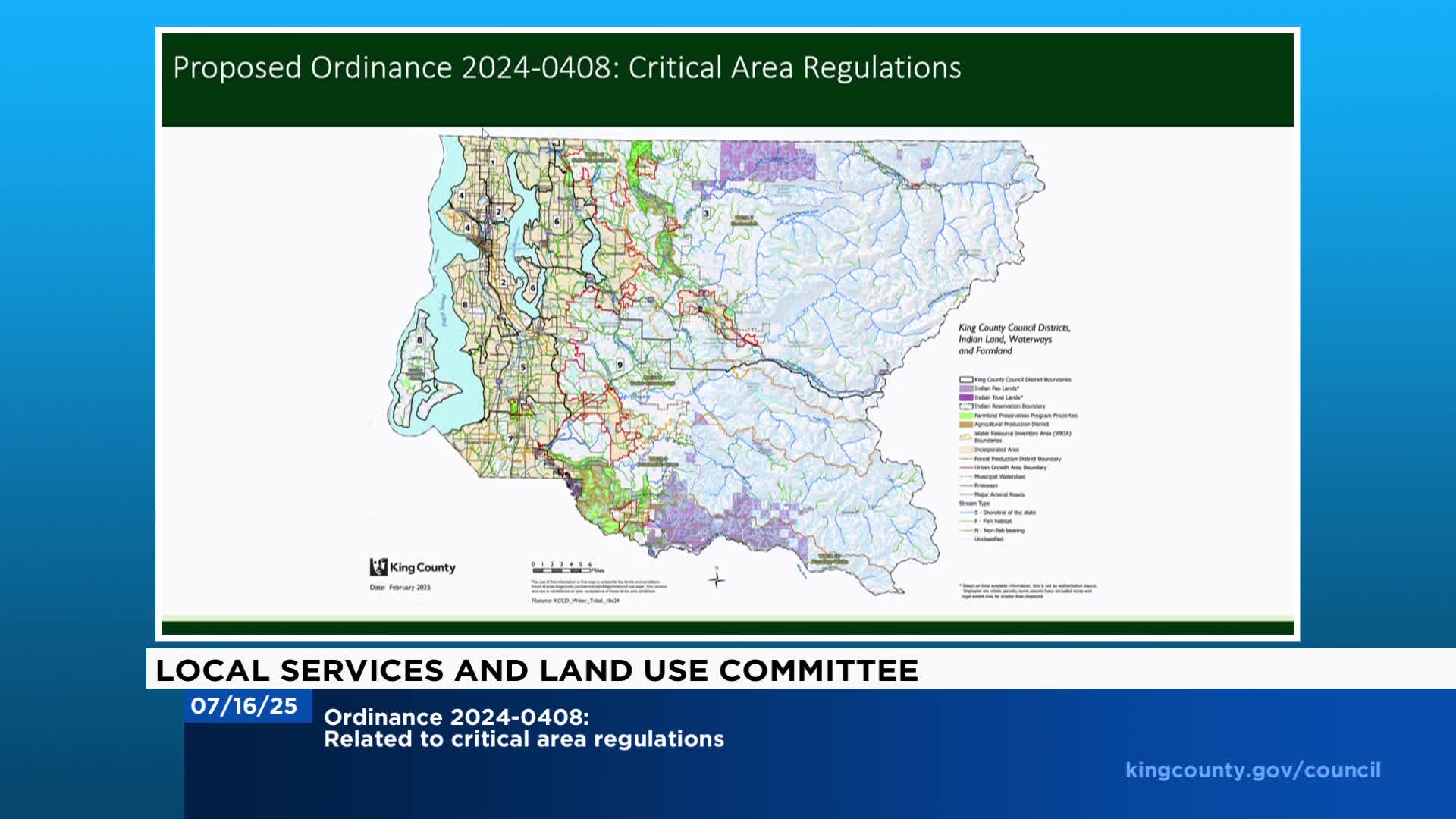King County Council Advances Striking Amendment for Critical Areas Regulations
July 16, 2025 | King County, Washington
Thanks to Scribe from Workplace AI , all articles about Washington are free for you to enjoy throughout 2025!

This article was created by AI using a video recording of the meeting. It summarizes the key points discussed, but for full details and context, please refer to the video of the full meeting. Link to Full Meeting
The proposed critical areas regulations are a crucial component of the state's Growth Management Act, aiming to protect forests, wetlands, and habitats while accommodating the county's growing housing demands. The chair noted that this legislation is designed to ensure that progress in one policy area does not undermine another, a challenging task given the complex nature of the issues at hand.
Key updates in the striking amendment include enhanced protections for salmon habitats, requirements for the use of native plant species in buffer zones, and the incorporation of traditional ecological knowledge in climate adaptation strategies. Additionally, the amendment addresses housing advocates' concerns by allowing for reduced wetland buffers in developments that include daycares or social services, reflecting a commitment to increasing housing stock.
The committee also discussed the Voluntary Stewardship Program, which aims to balance agricultural viability with critical area protections, and streamlined definitions for commercial agriculture to provide clearer guidelines for farmers. These changes are expected to foster regulatory predictability while safeguarding the county's vital natural resources.
As King County navigates its growth challenges, the committee's efforts to integrate diverse perspectives and prioritize both environmental and housing needs signal a proactive approach to sustainable development. The next steps will involve further discussions and refinements to ensure that the final regulations meet the community's needs while adhering to state requirements.
Converted from Local Services and Land Use Committee 7-16-25 meeting on July 16, 2025
Link to Full Meeting
Comments
View full meeting
This article is based on a recent meeting—watch the full video and explore the complete transcript for deeper insights into the discussion.
View full meeting
